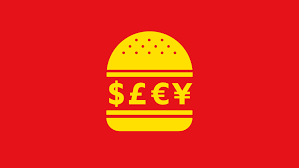Let me set up a scene for you. You are in a chilly hill station, your whole body is shivering from the cold and you have just gotten back from a tiring hike. What is the one food item you desperately crave? It’s Maggi, right? This dynamic journey of Maggi in the Indian economy began in 1983 after Nestlé acquired the company from Swiss businessman Julius Maggi in 1947 and turned it from a pre-made soup and sauce concept into instant noodles.
Upon entering the Indian market, the brand image of the noodles was set into a prompt and simple snack specifically marketed for children and as a convenience for mothers who need an instant solution to their child’s cravings. Maggi took a step further by emphasising the mothers’ efforts to make the noodles special by coming up with the tagline ‘Mom’s magic’. With India’s diverse range of cuisines, Maggi was able to diversify in terms of flavours to reach every household throughout the country and become a staple product.
Maggi had a 90% market share in the first 25 years, and 78% market share in the following five years. In the mesmerising monsoons, my friends and I used to indulge in steaming hot Maggi at the nearest food stall after our science and maths classes. The easily accessible vibrant yellow packets will be the only thing catching your gaze during long drives in India’s secluded cities and tourist destinations be it cosy mountain ranges or calm lakesides.
However, the too good to be true success came crashing down in 2015. Following testing processes, it was discovered that the amount of lead in Maggi was beyond the allowed amount. This led to a nationwide ban on all Maggi products by the government for an unstated period of time. Maggi’s sales plummeted by 59.5% in that year. It went from having sales of 29.64 billion in the instant noodles market to less than 17 billion. This allowed cheaper competitors to easily enter the industry and aggressively compete. Nestlé’s other products like Nescafé and KitKat also saw frequent fluctuations in sales after the Maggi ban, due to an overall lack of trust in Nestlé as a company.
Once the ban was removed after 6 months, Nestlé became an unstoppable force with the introduction of over 15 new products and was able to reach 60% market share in the instant noodles industry in less than two years! The 2015 scandal was officially named a ‘blessing in disguise’ by Nestlé India’s managing director and chairman, Mr Suresh Narayanan.
Fast forward to 2021, Nestlé made 432 crores in profit through their ace product, Maggi, the two-minute instant noodles. Even though we all know Maggi is never actually made within 2 minutes, it has become an adorable inside joke among the enormous consumer base for Maggi.
Maggi noodles have successfully addressed a fundamental snacking challenge by introducing a rapid and flavoursome method, particularly in regions where advanced culinary equipment and resources are scarce. Simultaneously, these noodles have earned a special spot within the kitchens of affluent Indian households, evoking a sense of nostalgia and familial warmth. It serves as an ideal edible remedy for individuals who face time constraints and financial limitations, as it offers a convenient and affordable option.
Maggi may have a lot more competition than it did back when they entered India in 1983, due to the increasing popularity of cup noodles in urban areas and more foreign brands entering the market as a result of globalisation. Yet, they will remain the ones who created a snack that was cheap, accessible and tasty for Indians all over the country.
Aarohi Shah AS-C






Leave a comment